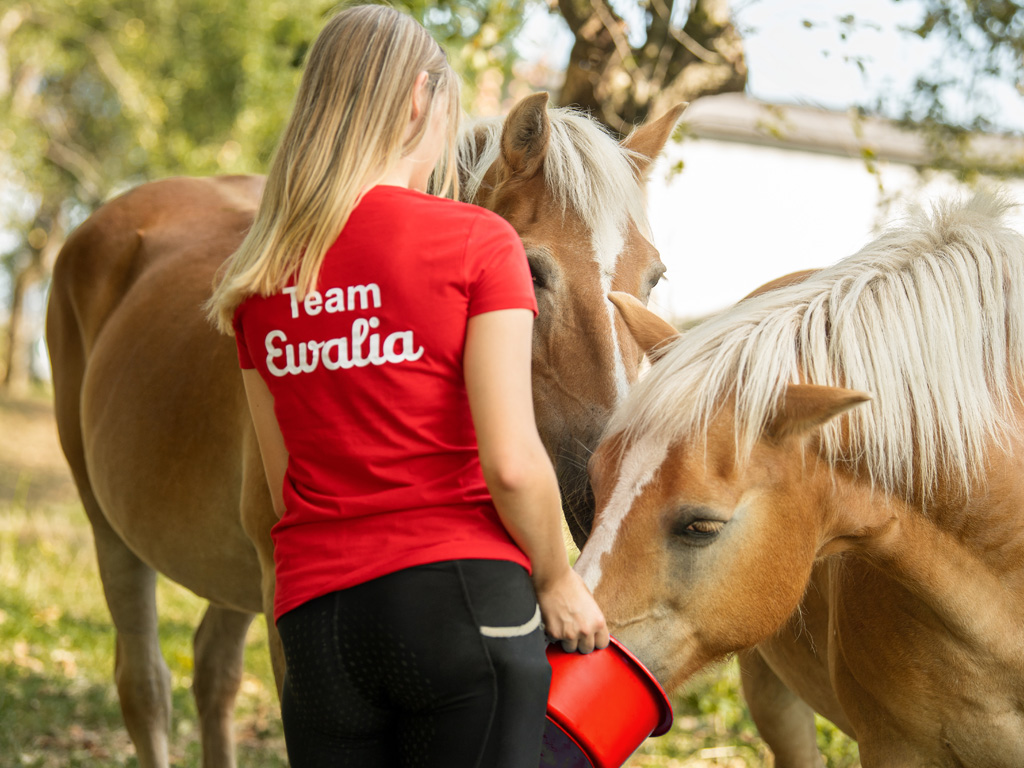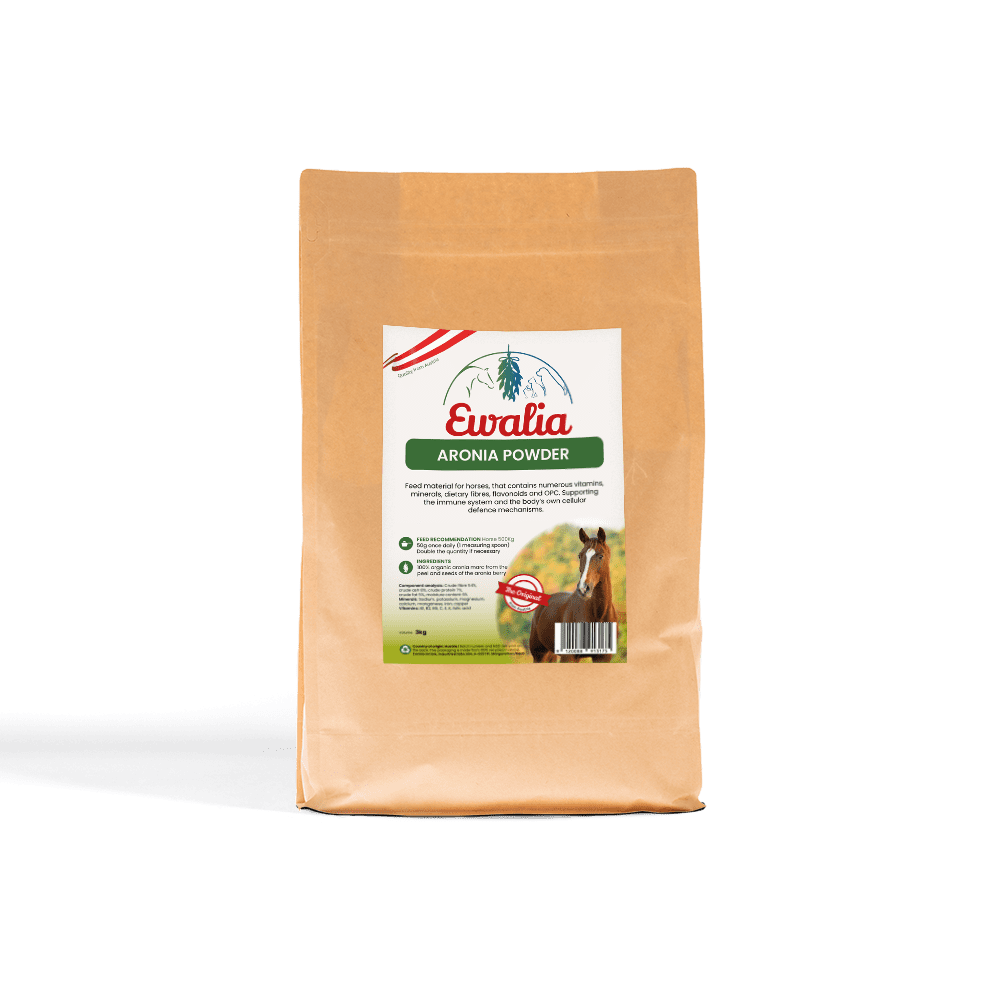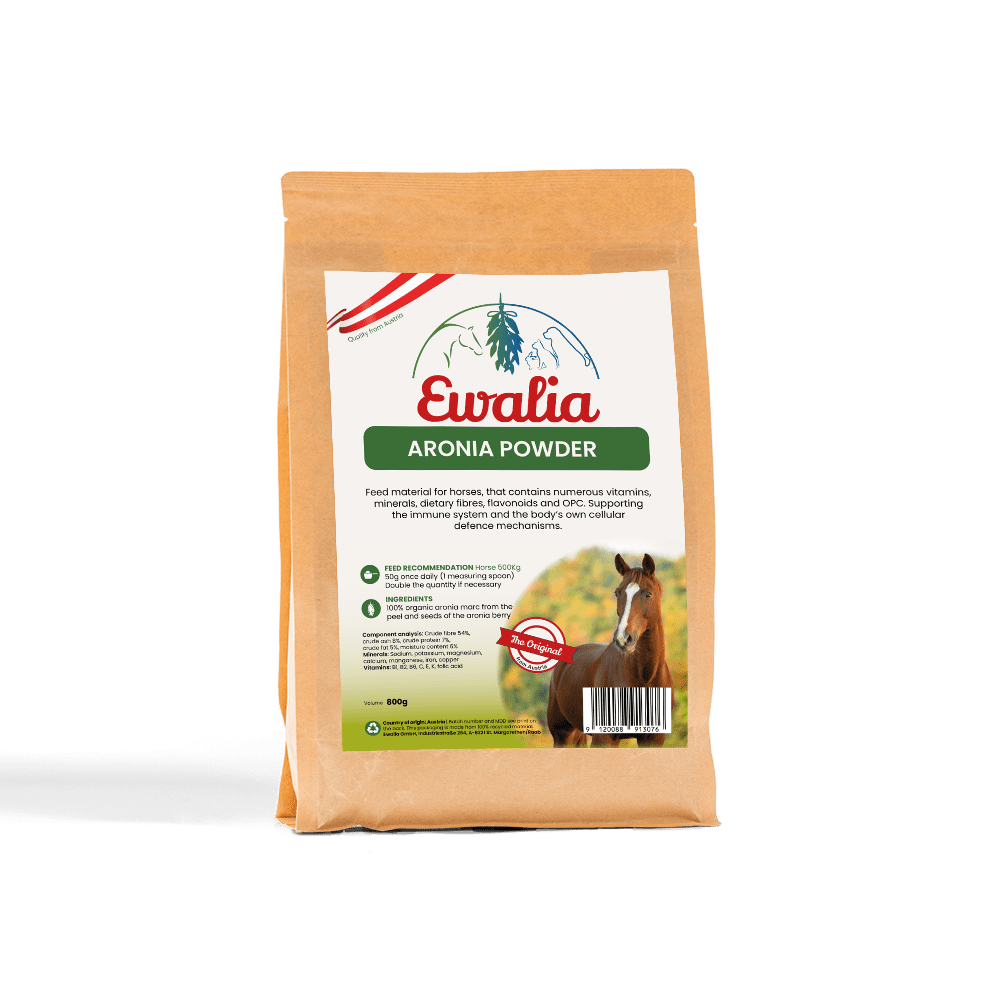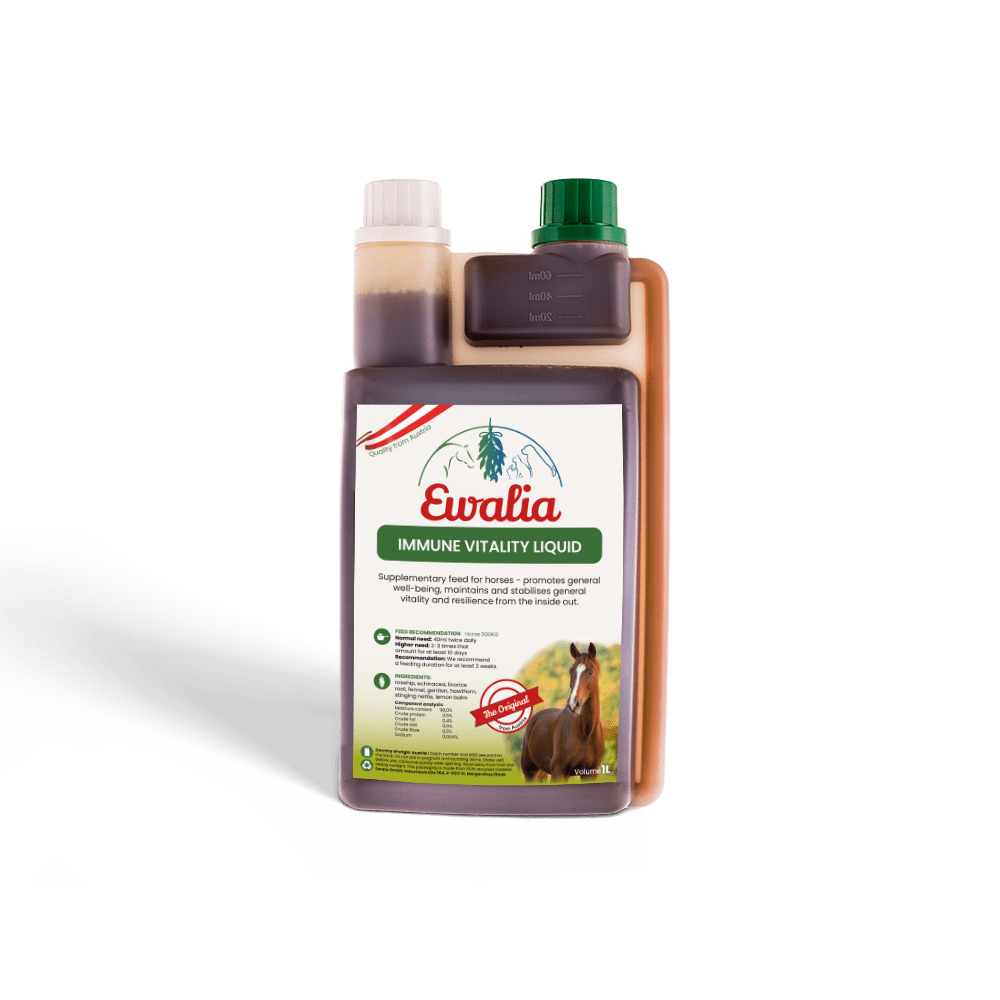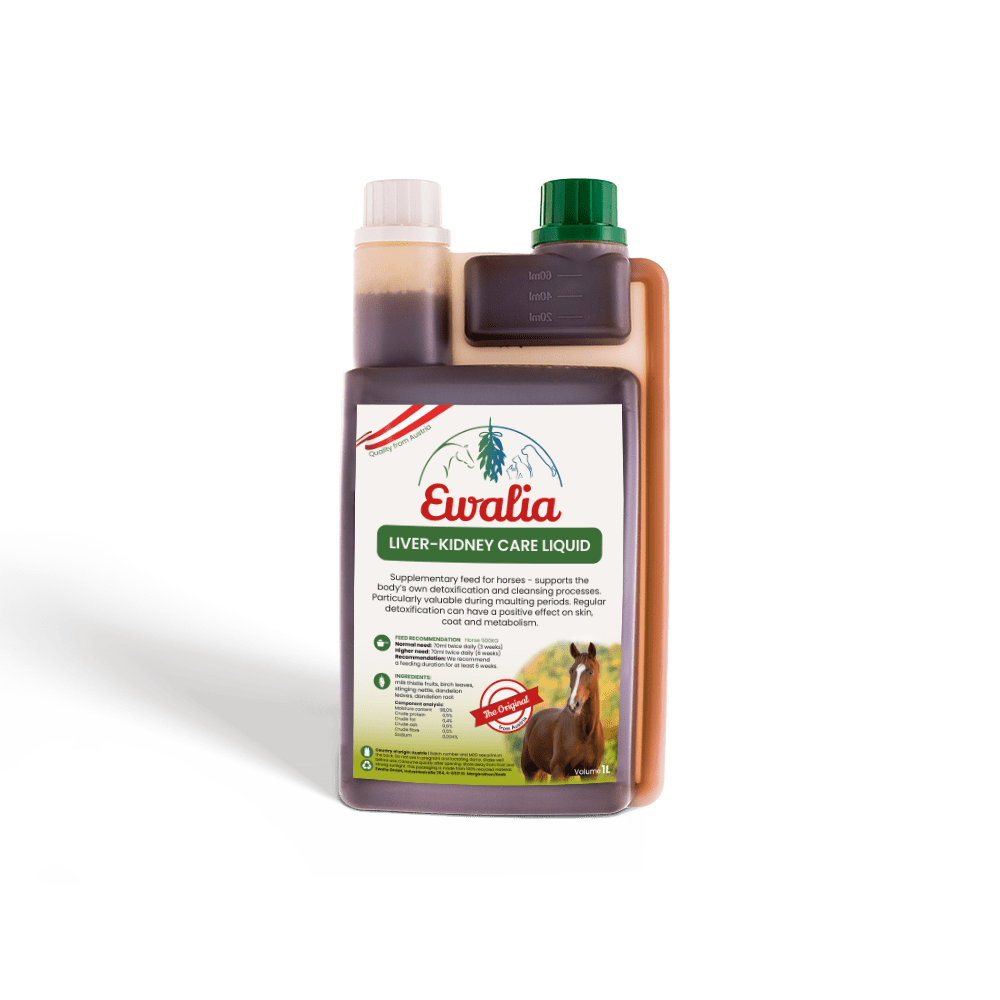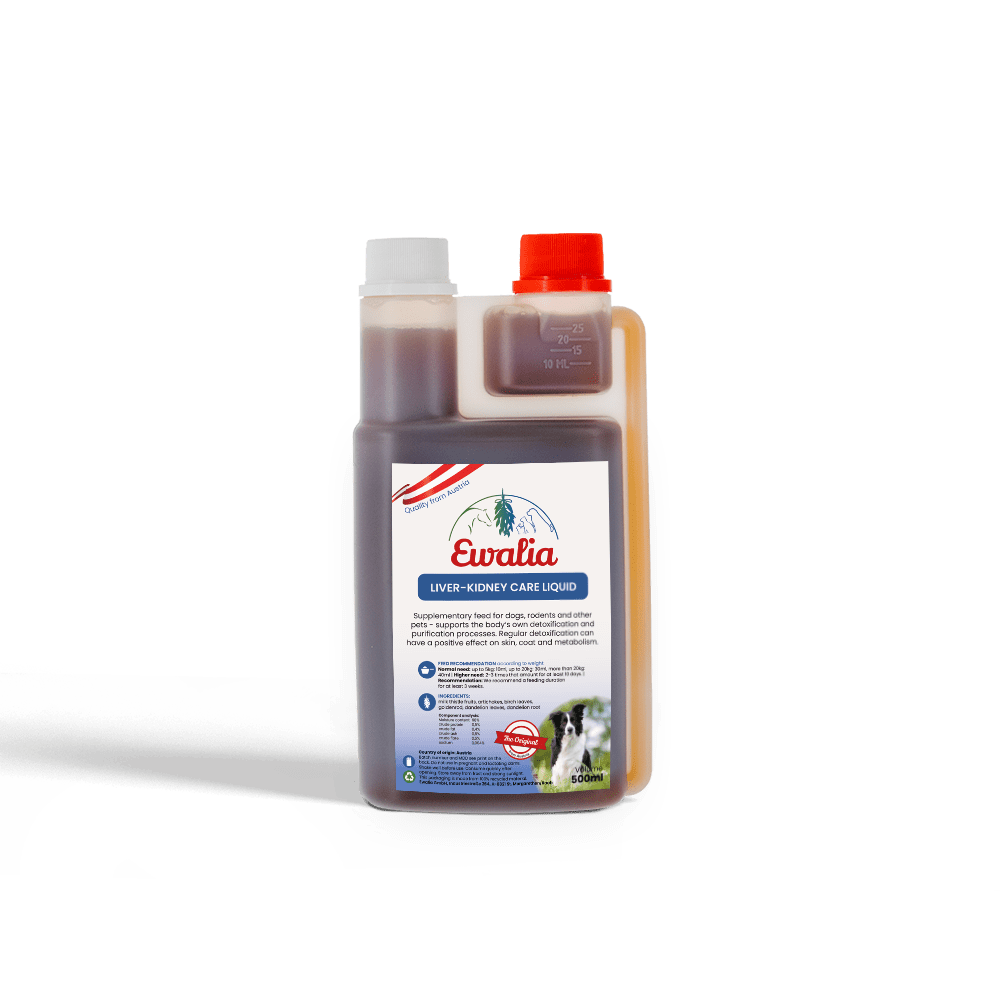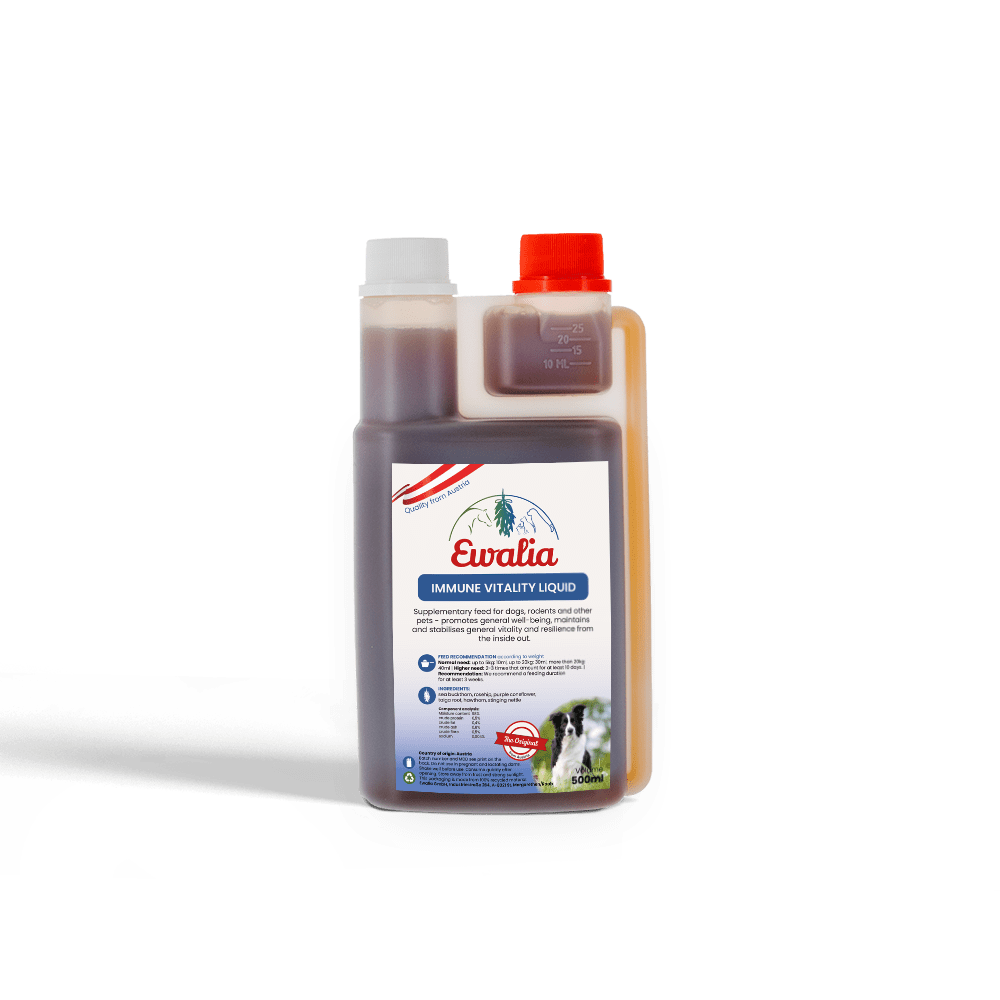Equine sarcoids
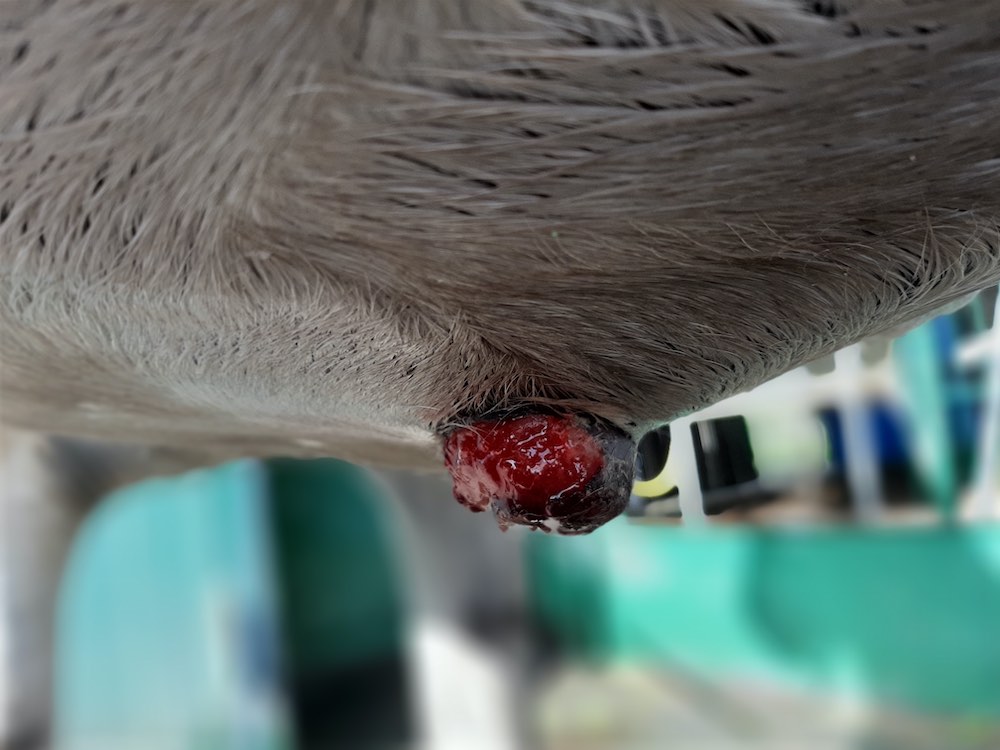
Equine sarcoids are the most commonly seen tumours in horses. Sarcoids are skin growths that are usually benign and do not metastasise to internal organs. Nevertheless, they are much more than mere cosmetic problems: they can quickly develop into aggressive tumours and cause serious harm. Sarcoids may appear as single or multiple growths and have a high rate of recurrence even after intense treatment. Learn here about equine sarcoids and the options for long-term treatment.
What do sarcoids look like?
Sarcoids are skin growths with keratinised surfaces that can appear on any area of the horse's body. In the early stage, a sarcoid may appear as a small nodule under the skin or feel like a thick, scaly layer of skin. Some sarcoids may be mistaken for a skin fungus, whilst others resemble warts or scar formation ("proud flesh"). If the lower limbs are affected, the growths sometimes resemble skin lesions from mud fever.
Sarcoids often develop on thinly-haired areas like the head (around the eyes, mouth, ears), on the belly and in the genital area. Irritations from bridles or girths can stimulate increased sarcoid growth. Depending on the location of the tumour, a horse with sarcoids may become unrideable, although its general well-being and abilities are not impaired.
The skin tumours come in various forms and are classified according to their appearance and tissue makeup. All types can develop quickly into more aggressive forms.
Occult sarcoids
Occult sarcoids are flat, hairless patches on the horse's body. Like conventional sarcoids, they occur most frequently on thinly-haired areas like around the eyes and mouth or on the neck or chest. They resemble abrasions or skin lesions from fungal infections. The skin at the affected area is grey and scaly, sometimes also thickened. Occult sarcoids grow quite slowly and may remain the same size for years.
Nodular sarcoids
Nodular sarcoids feel like hard lumps beneath the skin. They are often freely movable under the skin but sometimes attached to the skin or pedunculated. They mostly occur in areas where the skin is thin, such as on the head, on the inside of the thighs or in the genital area. As long as the skin covering it is intact and the nodes are encapsulated, this type of sarcoid can be removed surgically without problem. Treatment is more difficult if the tumour grows and breaks through the skin.
Verrucous sarcoids
Verrucous sarcoids can develop from occult sarcoids. They look like irregularly formed, lumpy warts growing in the horse's outer ear, armpits and groin. These skin growths develop slowly and normally do not impair the horse. They can become problematic through interference from injury or attempts at treatment, assuming more aggressive, fibroplastic forms.
Fibroplastic sarcoids
Fibroplastic sarcoids are ulcerated growths which can develop as a primary disease or from verrucous or nodular tumours which have become active through trauma. Their weeping, cauliflower-like fissured surfaces attract flies in summer and cause the horse extreme discomfort. Untreated, they form red, fleshy ulcers that bleed easily when injured. The open wounds are prone to infection from bacteria, leading to secondary infections and inflammations. This type of sarcoid shows uncontrolled, aggressive growth interrupted by phases in which the tumour stops growing and the horse's owner begins to hope that it is healing. Because they bleed easily, surgical removal is often advised, however this often leads to even more aggressive tumour growth.
Malignant sarcoids
Malignant sarcoids are the most aggressive form of equine sarcoids. The tumour spreads from the lymphatic vessels into the fasciae and tissue of the muscles in the affected area. In the advanced stage, coarse strands can be felt beneath the usually unaffected skin.
There are also mixed forms, in which the tumour shows characteristics from two types of sarcoid.
What causes sarcoids?
Sarcoids are caused by infection by contagious papillomaviruses, more specifically from bovine papillomavirus (BPV) Type 1 and 2. Papillomaviruses can infect many animal species, including humans. They cause tumours to the skin and mucosal surfaces, using small wounds as portals of entry and multiply rapidly through accelerated cell growth as the wound heals.
It was once believed that the viruses were transmitted from cattle to horses via insects. Genetic analyses, however, have shown that the genetic information of papillomaviruses in cattle and horses is not the same, i.e., a horse would be a "foreign host" for BPV 1 and 2. Today it is assumed that infection occurs between horses. It is notable, however, that only certain horses may become infected within a herd.
A horse's susceptibility to developing sarcoids may depend on several factors. The following factors have been noted with regard to afflicted horses:
- Faulty stabling, faulty diet, stress
- Weakened immune system, skin immunodeficiency disorders, feed allergies
- Intestinal problems like watery stool
- Metabolic disorders
- Liver and kidney problems
- Detoxification disorders
It is also thought that sarcoids are genetic, as some breeds (Arabians, Quarter Horses, Appaloosas, Thoroughbreds) are more prone and because skin tumours are more often seen in some lines.
How are sarcoids diagnosed?
Your vet should be alerted to the presence of any suspicious skin changes. Sarcoids can be easily differentiated from other types of skin growths. Vets can normally recognise them quickly. Histological examination may be useful to differentiate sarcoids from juvenile warts in young horses, melanomas, or carcinomas. However, since any injury can activate and accelerate tumour growth, a biopsy is usually not recommended. Recent studies suggest less risky methods for identifying sarcoids, for example by using a PCR test to identify BPV DNA from smears or skin scrapings, scabs, or hair roots. However, because BPV DNA is sometimes also found in non-affected tissue, such testing may lead to false positive results.
Can sarcoids be prevented? Is there a sarcoid vaccine?
The danger of contracting sarcoids is relatively low. Horses with sarcoids need not be kept separate from other horses. Normal stable hygiene will suffice – separate grooming items, tack, rugs, boots, etc. However, avoid putting a healthy horse into a box that held a horse with sarcoids.
Some laboratories will create autogenous vaccines for sarcoids in horses and dogs. Autogenous vaccines are "custom" medications that are made from a patient's own pathogens. A vaccine is prepared using tissue taken from the tumour of the afflicted animal and can be used to treat that animal as well as prophylactically on the herd. Creating such a vaccine takes about 10 days. The vaccine must be administered again after 3 or 4 weeks.
What treatments are available for horses with sarcoids?
Surgical removal: Nodular and clearly demarcated sarcoids should be removed completely through surgery at early stages. Depending on type, location and scope, sarcoids may be removed through conventional surgery, cryosurgery, electrotherapy or radiotherapy. The sometimes-practised litigation of nodular sarcoids often leads to the spread of tumorous tissue. Chronic wounds frequently appear following surgical procedures. The tumour may also reappear in a more aggressive form. However, laser surgery brings good results.
Treatment with radiotherapy can also bring good results, but is very expensive and offered by very few clinics.
Chemotherapy involves preparations that can damage and destroy the cells. These are administered either through injection or in the form of salves. Application can cause adverse effects, not only in the animal but also in the humans involved! One study (2017) has shown a quite promising method of treatment combining chemotherapy and electrotherapy, in which a heavy metal preparation is injected into the tumour followed by electrical currents applied to the tissue.
Immunotherapy: There is a relatively new procedure which involves localised treatment with injections of interleukin-2. Interleukins are used in cancer treatments and boost the body's own defences. The body should reject the tumour through an inflammatory response. Immune responses can sometimes be so extreme that treatment must be interrupted due to high fever or severe swelling.
The tumour is injected with the Bacillus Calmette–Guerin vaccine, also known as the "BCG vaccine", and triggers a local immune reaction against the degenerated cells. BCG was originally developed as a vaccine for tuberculosis. For sarcoids, BCG is injected into the tumour to kill off the tumour cells. This treatment should be repeated every 2 to 4 weeks, depending on the treatment scheme, until the tumour recedes. Its success rate for treating sarcoids, particularly those located near the eyes, is inexplicably quite high. However, there can be strong side effects, ranging from severe local inflammation to anaphylactic shock.
As all these treatment options are unpleasant for the afflicted horse and put somewhat heavy strain on the organism, milder treatments – which can show similar success – should also be considered. One is the local treatment of sarcoids with ointments.
Aciclovir ointment is a preparation that is used in human medicine to treat herpes, and also has positive effects on sarcoids in not yet strongly pronounced stages. Topical treatment with ointment can also complement surgical measures, chemotherapy, or laser therapy and help the skin lesions to heal.
xx-Terra and Newmarket Bloodroot Ointment are ointments that contain the plant substances of bloodroot. Their effects are based on local stimulation of the immune system which, through inflammatory reaction, rejects the tumorous tissue in about one week. The wound then heals without problems. Bloodroot ointments are quite effective against sarcoids up to 2 cm in size.
Localised treatment of sarcoids with colloidal Silver, which is applied several times daily over several weeks in the form of soaked bandages, can help some horses. This "silver water" has antimicrobial effects and is said to dry out the tumours.
Is there a phytotherapeutic treatment for sarcoids?
In human medicine, European mistletoe (Viscum album austriacus) extract is used as a concomitant therapy in treating a variety of tumours. This mistletoe has anti-tumoral and immunomodulatory properties, and its effects on sarcoids have been proven in studies. Mistletoe therapy is a lengthy process and involves a series of injections in varying concentrations. Most horses tolerate it well and in many cases it leads to healing, especially in younger horses under the age of nine. Older horses and those with recurring sarcoids can benefit from mistletoe regiments twice a year. Some horses, however, do not respond to mistletoe therapy.
My horse has sarcoids. What can I do to help him?
Papillomaviruses are found all around the horse's environment. A horse's immune response to the viruses is the key factor in the likelihood of developing sarcoids. The individual horse's immune response depends on many factors that you, as its owner, can control. These include stable conditions, feed, stress in the herd, or stress during riding. Metabolic disorders associated with severe strain on the liver and kidneys can also weaken a horse's immune system.
A very good way to control the spread of sarcoids is through early localised treatment with bloodroot ointments accompanied by a strengthening of the immune system through herbs.
There are many herbs that can strengthen the immune system: Rose hips contain valuable antioxidants and lots of vitamin C to promote antibody formation. Echinacea stimulates the immune system and inhibits inflammation. Fennel has antimicrobial and anti-inflammatory properties. Hawthorn can improve cardiac function in stressful periods. Balm has antiviral properties as well. Its soothing active ingredients are beneficial to the horse's psyche, which is also under stress from the sarcoid disease and the necessary treatments.
Herbs that support liver and kidney function help to remove toxins from the organism. Nettle and birch leaves stimulate metabolism by increasing urine output. The bitter substances in dandelion increase the production of gastric and intestinal juices and bile. They promote digestion and help to take strain off the liver. Milk thistle is a proven herb for protecting the liver and promoting liver cell regeneration.
Some (unfortunately not all) equine bodies reject sarcoids on their own after weeks or months of consistent treatment of the underlying metabolic disorders and strengthening of the immune system. Horses with sarcoids require individual treatment plans, as different horses react quite differently to the various treatment options.
However, a word of caution: Veterinary consultation is essential before carrying out any treatment plan! Experimentation can be dangerous! Injuries or irritations to sarcoids may cause the tumours to spread and develop into more aggressive forms!
Sources and further reading
- Fritz, C., & Maleh, S. (2016). Zivilisationskrankheiten des Pferdes. Thieme.
- Gerber, V., Venner, M., & Straub, R. (2016). Pferdekrankheiten: Innere Medizin (2. Ausg.). (V. Gerber, & R. Straub, Hrsg.) Bern: utb.
- Loschelder, J., Winter, J., & Gehlen, H. (02 2019). Pferdeheilkunde - Equine Medicine. Von Therapiemöglichkeiten bei Equinen Sarkoiden: https://docplayer.org/167708289-Therapiemoeglichkeiten-bei-equinen-sarkoiden.html abgerufen
- Stadler, S. (03. 03 2011). vetdoc.vu-wien.ac.at. Von Successfull treatment of Equine Sarcoids by topical Aciclovier application: https://vetdoc.vu-wien.ac.at/vetdoc/suche.publikationen_mug_autoren?sprache_in=de&menue_id_in=206&id_in=111&publikation_id_in=69318 abgerufen












